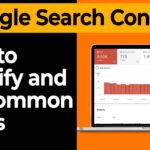
In today’s competitive digital landscape, businesses are constantly looking for ways to gain an edge over their rivals. One of the most effective strategies to achieve this is by leveraging competitor analytics. By analyzing your competitors’ strategies, strengths, and weaknesses, you can uncover valuable insights that can help you improve your own conversion rates. In this article, we’ll explore how you can use competitor analytics to boost your conversion rates and stay ahead of the competition.
Table of Contents
What is Competitor Analytics?
Competitor analytics is the process of gathering and analyzing data about your competitors to understand their strategies, performance, and market positioning. This involves examining various aspects of their business, such as their website, marketing campaigns, social media presence, and customer engagement tactics. The goal is to identify what they’re doing well, where they’re falling short, and how you can capitalize on these insights to improve your own business.
Why is Competitor Analytics Important for Conversion Rates?
Conversion rates are a critical metric for any business, as they directly impact revenue and growth. A high conversion rate means that a larger percentage of your website visitors are taking the desired action, whether it’s making a purchase, signing up for a newsletter, or filling out a contact form. By using competitor analytics, you can identify the strategies that are driving conversions for your competitors and apply them to your own business. Additionally, you can spot gaps in their approach that you can exploit to differentiate yourself and attract more customers.
Steps to Use Competitor Analytics to Improve Conversion Rates
1. Identify Your Competitors
The first step in using competitor analytics is to identify who your competitors are. These can be direct competitors who offer similar products or services, or indirect competitors who target the same audience but with different offerings. Once you’ve identified your competitors, you can start gathering data about their online presence, marketing strategies, and customer engagement tactics.
2. Analyze Their Website
Your competitors’ websites are a goldmine of information. Start by analyzing their website design, user experience, and navigation. Look for elements that make their website user-friendly and engaging, such as clear calls-to-action (CTAs), intuitive navigation, and fast loading times. Pay attention to the content they’re using, including product descriptions, blog posts, and customer testimonials. Are they using persuasive language? Are they addressing customer pain points effectively? These insights can help you optimize your own website to improve conversions.
Also Read:
- Your Pay-Per-Click (PPC) Plan for 2025
- 12 Common Google Indexing Issues: How to Resolve Them
- The Top 10 Free Email Marketing Software for Your Business
3. Evaluate Their SEO Strategy
Search engine optimization (SEO) plays a crucial role in driving traffic to your website. By analyzing your competitors’ SEO strategies, you can identify the keywords they’re targeting, the backlinks they’ve acquired, and the content that’s performing well for them. Use tools like Ahrefs, SEMrush, or Moz to conduct a thorough SEO analysis. Look for opportunities to target keywords that your competitors may have overlooked, and create high-quality content that can outrank them in search engine results.
4. Monitor Their Social Media Presence
Social media is a powerful tool for engaging with your audience and driving conversions. Analyze your competitors’ social media profiles to see how they’re interacting with their followers, the type of content they’re posting, and the engagement they’re receiving. Look for patterns in their posting schedule, the tone of their messaging, and the types of content that resonate with their audience. Use these insights to refine your own social media strategy and create content that drives more engagement and conversions.
5. Study Their Paid Advertising Campaigns
Paid advertising is another area where competitor analytics can provide valuable insights. Analyze your competitors’ paid search and social media ads to understand their targeting, messaging, and offers. Look for trends in their ad copy, visuals, and CTAs. Are they using urgency or scarcity tactics? Are they offering discounts or free trials? Use these insights to create more effective ad campaigns that resonate with your target audience and drive higher conversions.
6. Analyze Their Email Marketing Strategy
Email marketing is a highly effective channel for nurturing leads and driving conversions. Analyze your competitors’ email campaigns to see how they’re engaging with their subscribers. Look at the frequency of their emails, the subject lines they’re using, and the content of their messages. Are they using personalized messaging? Are they segmenting their audience? Use these insights to optimize your own email marketing strategy and create campaigns that drive more conversions.
7. Assess Their Customer Reviews and Feedback
Customer reviews and feedback can provide valuable insights into what your competitors are doing well and where they’re falling short. Analyze the reviews and feedback on your competitors’ websites, social media profiles, and third-party review sites. Look for common themes in the feedback, such as product quality, customer service, or delivery times. Use these insights to identify areas where you can differentiate yourself and provide a better customer experience.
8. Benchmark Your Performance
Once you’ve gathered and analyzed data about your competitors, it’s important to benchmark your own performance against theirs. Compare your website traffic, conversion rates, and engagement metrics to see how you stack up. Identify areas where you’re underperforming and develop strategies to close the gap. Use the insights from your competitor analysis to set realistic goals and track your progress over time.
Tools for Competitor Analytics
There are several tools available that can help you conduct competitor analytics effectively. Some of the most popular ones include:
- Ahrefs: A comprehensive SEO tool that allows you to analyze your competitors’ backlinks, keywords, and content performance.
- SEMrush: An all-in-one marketing toolkit that provides insights into your competitors’ SEO, PPC, and content strategies.
- Moz: A powerful SEO tool that offers competitor analysis, keyword research, and site audits.
- SimilarWeb: A tool that provides insights into your competitors’ website traffic, referral sources, and user behavior.
- BuzzSumo: A content marketing tool that helps you analyze your competitors’ most popular content and social media engagement.
Best Practices for Using Competitor Analytics
While competitor analytics can provide valuable insights, it’s important to use this information strategically. Here are some best practices to keep in mind:
- Focus on Your Unique Value Proposition: While it’s important to learn from your competitors, don’t lose sight of what makes your business unique. Use competitor insights to enhance your own strengths and differentiate yourself in the market.
- Stay Ethical: Avoid copying your competitors’ strategies outright. Instead, use the insights you gain to inspire your own innovative approaches.
- Continuously Monitor and Adapt: The digital landscape is constantly evolving, so it’s important to continuously monitor your competitors and adapt your strategies accordingly.
- Prioritize Customer Experience: Ultimately, the key to improving conversion rates is providing a superior customer experience. Use competitor insights to identify areas where you can enhance your customer experience and build stronger relationships with your audience.
Competitor analytics is a powerful tool that can help you improve your conversion rates and stay ahead of the competition. By analyzing your competitors’ strategies, you can uncover valuable insights that can inform your own marketing efforts. From optimizing your website and SEO strategy to refining your social media and email marketing campaigns, competitor analytics can provide the guidance you need to drive more conversions and grow your business. Remember to use this information strategically, focus on your unique value proposition, and prioritize the customer experience to achieve long-term success.
By following the steps outlined in this article and leveraging the right tools, you can turn competitor analytics into a competitive advantage and take your business to the next level.









